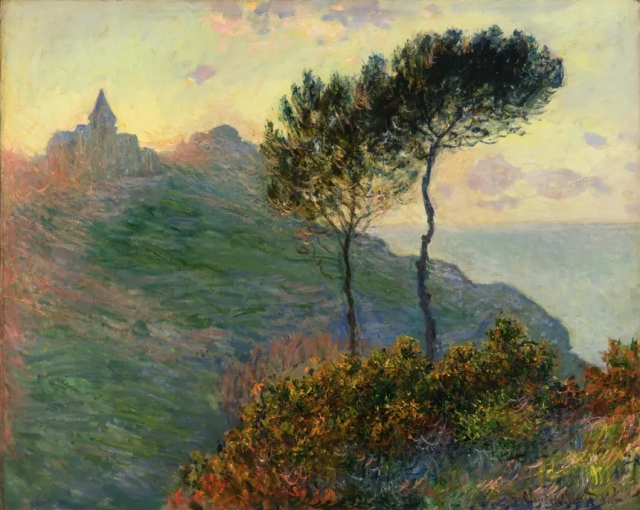Claude Monet’s The Church at Varengeville

“The blazing Romanticism of this gold, green and purple visionary scene belies any misconception that Monet simply painted what he saw or was a relaxed celebrant of leisure. Even the morally fervent Victorian critic Ruskin might have been moved if he’d seen that medieval church glowing on its hilltop in the mystical sun. He would have seen this as a religious work, and perhaps it is. Monet steps out from behind his easel, to share deep emotions with us. He uses colour expressively, dives imaginatively into this spectacular piece of Normandy coastline where a deep gorge separates us from the church. Does that abyss symbolise a gulf between him and God, or between modern life and a simpler past? This is a sublime revelation of Monet’s inner turbulence.”
— The Barber Institute of Fine Arts, University of Birmingham

